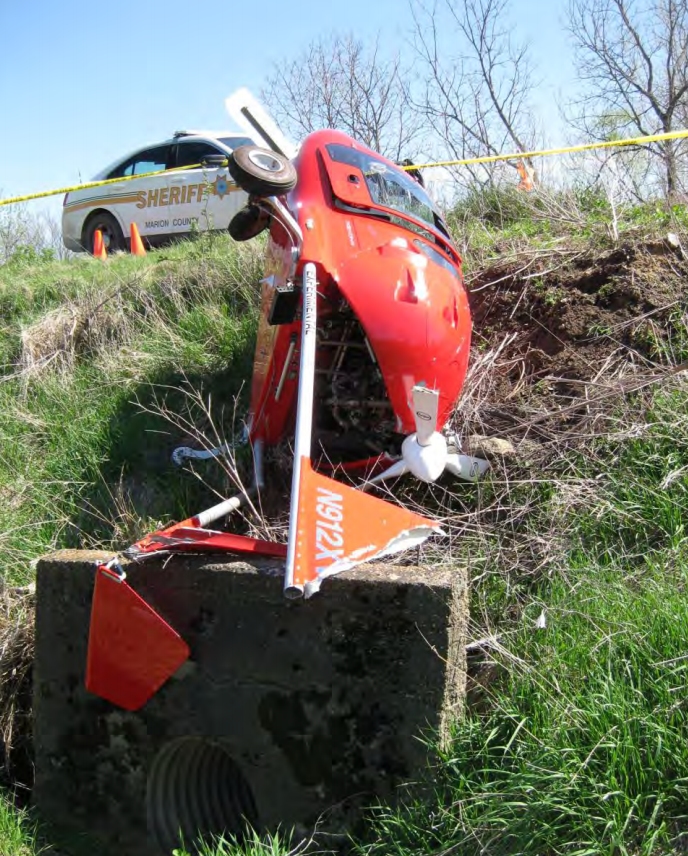
ASN Wikibase Occurrence # 194881
This information is added by users of ASN. Neither ASN nor the Flight Safety Foundation are responsible for the completeness or correctness of this information.
If you feel this information is incomplete or incorrect, you can submit corrected information.
| Date: | Monday 17 April 2017 |
| Time: | 13:41 |
| Type: |  Celier Xenon 4 |
| Owner/operator: | Private |
| Registration: | N912XV |
| MSN: | CAM14M2E02AA023 |
| Year of manufacture: | 2016 |
| Total airframe hrs: | 300 hours |
| Engine model: | Rotax 912 ULS-T |
| Fatalities: | Fatalities: 0 / Occupants: 2 |
| Aircraft damage: | Substantial |
| Category: | Accident |
| Location: | Marion County, Knoxville, IA -
 United States of America United States of America
|
| Phase: | Take off |
| Nature: | Private |
| Departure airport: | Knoxville, IA (OXV) |
| Knoxville, IA (OXV) | |
| Investigating agency: | NTSB |
| Confidence Rating: |
The sport pilot reported that the takeoff in the experimental, amateur-built gyroplane was normal; however, while continuing to climb through 500 ft above ground level, the aircraft stopped climbing and started to descend. The pilot-rated passenger reported hearing a decrease in engine power, but the engine continued to operate. The pilot started to turn back to the airport, then chose to land in a field. He saw a powerline and he turned sharply; the gyroplane hit the powerline then fell and impacted the side of a ditch.
The gyroplane kit manufacturer installed a turbocharged, 135-hp Rotax 912 ULST that was modified from the 100-hp Rotax 912 ULS engine. During a postaccident examination, the engine started without hesitation and was run at idle power, but only for a brief time, since the propeller was broken.
The brother of the accident pilot, who was a co-owner of the aircraft, reported that the engine had a history of not developing full power. He stated that the engine would develop about 3,500 rpm instead of developing full power at 5,200 to 5,300 rpm. On numerous occasions, he adjusted the manifold pressure probe by trial and error to get the engine to develop full power. The engine would operate properly, then the problem would reoccur, and he would repeat the process. The gyroplane had operated successfully for 7.9 hours since the last time the engine had not produced full power until the time of the accident. The owners reported that they did not understand the operation of the turbocharged engine or its associated components, and that the kit manufacturer did not provide operating manuals that explained the operation of the gyroplane or its turbocharged engine.
Probable Cause: A partial loss of engine power for reasons that could not be determined based on the available information. Contributing to the accident was the failure of the owners to obtain proper materials regarding the operation and maintenance of the engine.
Accident investigation:
 |
|
Sources:
NTSB
FAA register: http://registry.faa.gov/aircraftinquiry/NNum_Results.aspx?NNumbertxt=912XV
Location
Images:

Photo: NTSB
Revision history:
| Date/time | Contributor | Updates |
|---|---|---|
| 18-Apr-2017 04:48 | Geno | Added |
| 18-Apr-2017 06:25 | harro | Updated [Aircraft type] |
| 11-Nov-2018 08:31 | ASN Update Bot | Updated [Time, Cn, Operator, Nature, Departure airport, Destination airport, Source, Narrative, Plane category, Accident report, ] |
| 11-Nov-2018 09:05 | harro | Updated [Source, Narrative, Photo] |
Corrections or additions? ... Edit this accident description
The Aviation Safety Network is an exclusive service provided by:


 ©2024 Flight Safety Foundation
©2024 Flight Safety Foundation